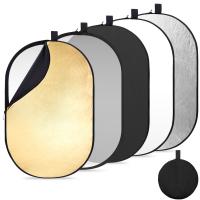What Hair Looks Like Under A Microscope ?
Under a microscope, hair appears as a shaft with a distinct structure. The outer layer of the hair shaft is called the cuticle, which consists of overlapping scales that protect the inner layers. The cuticle scales can vary in shape and pattern depending on the type of hair. Beneath the cuticle is the cortex, which makes up the majority of the hair shaft and contains the pigment responsible for hair color. The cortex also gives hair its strength and elasticity. At the center of the hair shaft is the medulla, which is a hollow core that may or may not be present in all hair types. The appearance of hair under a microscope can provide valuable information about its condition, such as damage, thickness, and overall health.
1、 Hair Structure and Composition
Hair is a fascinating structure that has been studied extensively under microscopes to understand its composition and structure. When observed under a microscope, hair appears as a cylindrical shaft with distinct layers and structures.
The outermost layer of the hair shaft is called the cuticle. It consists of overlapping scales that protect the inner layers of the hair. The cuticle plays a crucial role in maintaining the hair's strength and preventing damage. Recent studies have revealed that the cuticle is not a smooth surface as previously believed, but rather has a rough texture with tiny protrusions. This new understanding of the cuticle's structure has shed light on how hair interacts with various hair care products and treatments.
Beneath the cuticle lies the cortex, which makes up the majority of the hair shaft. The cortex contains the pigment responsible for hair color and provides the hair's strength and elasticity. Under a microscope, the cortex appears as a series of elongated cells arranged in a parallel fashion. Recent research has shown that the cortex is composed of keratin proteins, which are responsible for the hair's structural integrity. Understanding the composition and structure of the cortex has led to advancements in hair care products that target specific hair concerns, such as strengthening treatments and color preservation.
At the center of the hair shaft is the medulla, a less defined and often absent layer. The medulla's function is still not fully understood, and its presence varies among individuals and hair types. Some studies suggest that the medulla may play a role in hair insulation and moisture retention.
In conclusion, studying hair under a microscope has provided valuable insights into its structure and composition. Recent advancements in microscopy techniques have allowed for a more detailed understanding of the cuticle's texture and the composition of the cortex. This knowledge has paved the way for innovative hair care products and treatments that target specific hair concerns, ultimately improving the overall health and appearance of our hair.

2、 Cuticle Layer of Hair
The cuticle layer of hair is the outermost protective layer that covers the hair shaft. When observed under a microscope, the cuticle layer appears as a series of overlapping scales or shingles, similar to the tiles on a roof. These scales are made up of flattened, transparent cells that are arranged in a specific pattern. The cuticle layer plays a crucial role in protecting the inner layers of the hair and maintaining its overall health.
Recent advancements in microscopy techniques have allowed for a more detailed understanding of the cuticle layer's structure. It has been discovered that the scales of the cuticle layer are not perfectly smooth but have a slightly rough texture. This roughness helps to create friction between neighboring scales, which contributes to the hair's strength and resistance to damage.
Furthermore, studies have revealed that the cuticle layer is not a uniform structure but consists of multiple layers itself. These layers vary in thickness and composition, with some being more resistant to damage than others. This variation in the cuticle layer's structure can explain why some individuals have naturally stronger and more resilient hair than others.
Additionally, under high magnification, it is possible to observe the presence of tiny gaps or irregularities between the scales of the cuticle layer. These gaps can be a result of various factors, including chemical treatments, heat styling, or environmental damage. When the cuticle layer is compromised, the inner layers of the hair become more vulnerable to moisture loss, leading to dryness, frizz, and breakage.
Understanding the structure of the cuticle layer of hair under a microscope provides valuable insights into hair health and care. It emphasizes the importance of protecting the cuticle layer from damage and maintaining its integrity through proper hair care practices.

3、 Cortex and Medulla of Hair
The cortex and medulla are two important components of hair that can be observed under a microscope. The cortex is the middle layer of the hair shaft, surrounding the medulla, which is the innermost layer. These structures play a crucial role in determining the strength, color, and texture of hair.
When observed under a microscope, the cortex appears as a densely packed region of elongated cells. These cells contain keratin, a protein that gives hair its strength and flexibility. The arrangement of these cells within the cortex can vary, resulting in different hair types such as straight, wavy, or curly.
The medulla, on the other hand, is a less structured and often less prominent layer. It consists of loosely packed cells and air spaces. The presence and size of the medulla can vary among individuals and even among different hairs on the same person. In some cases, the medulla may be absent altogether.
Recent research has shed light on the role of the cortex and medulla in hair properties. For example, studies have shown that the arrangement and alignment of cortical cells can affect the mechanical properties of hair, such as its resistance to breakage. Additionally, the medulla has been found to influence hair color, with larger medullas often associated with lighter hair shades.
Understanding the microscopic structure of hair, including the cortex and medulla, is essential for various fields such as forensics, cosmetology, and medical research. By examining these structures, scientists can gain insights into hair growth, damage, and potential treatments for hair-related conditions.

4、 Hair Shaft and Follicle
Under a microscope, hair appears quite fascinating and intricate. The hair shaft, which is the visible part of the hair, is composed of three layers: the cuticle, cortex, and medulla. The cuticle is the outermost layer and consists of overlapping scales that protect the inner layers of the hair. The cortex, located beneath the cuticle, contains the pigment that gives hair its color and provides strength and elasticity. The medulla, found in the center of the hair shaft, is a soft, spongy substance that varies in size and may not be present in all hair types.
The hair follicle, on the other hand, is the structure from which the hair grows. It is located beneath the surface of the skin and consists of several layers, including the dermal papilla, hair bulb, and hair matrix. The dermal papilla contains blood vessels that supply nutrients to the hair follicle, while the hair bulb is the actively growing part of the hair. The hair matrix, located within the hair bulb, is responsible for producing new hair cells.
Recent research has shed light on the microscopic structure of hair, revealing new insights. For instance, studies have shown that the arrangement and alignment of the cuticle scales can affect the hair's strength and resistance to damage. Additionally, advancements in imaging techniques have allowed scientists to observe the intricate details of the hair follicle, leading to a better understanding of hair growth and regeneration.
In conclusion, examining hair under a microscope provides a deeper understanding of its structure and function. The hair shaft and follicle reveal a complex arrangement of layers and cells that contribute to the overall appearance and health of our hair. Ongoing research continues to uncover new information about hair at the microscopic level, enhancing our knowledge of this remarkable feature of the human body.






































